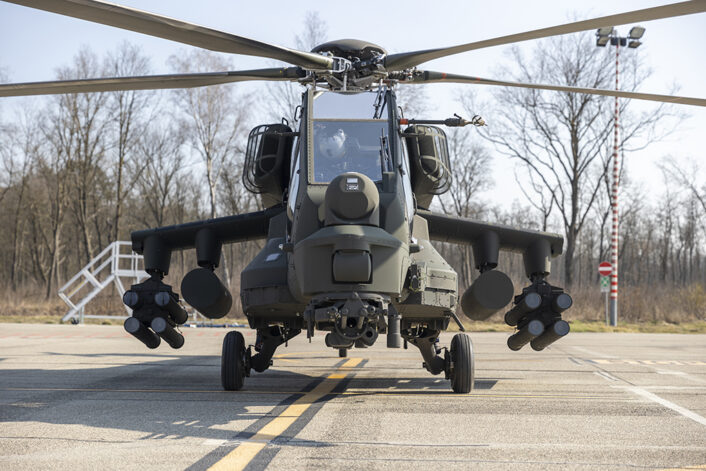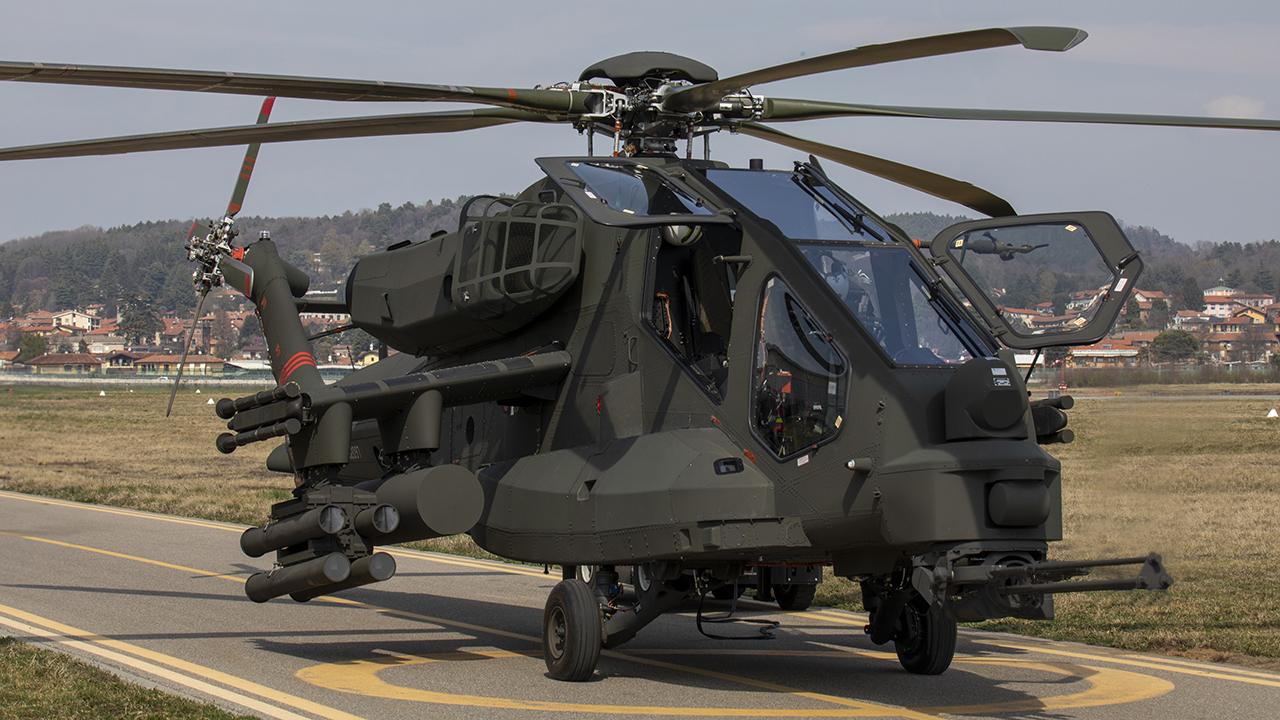The AW249 was presented Eurosatory in Paris, where Leonardo finally shared some more details about the next generation combat helicopter.
Leonardo has not disclosed many details about its new AW249 helicopter. At least until today. In fact, on Jun. 18, 2024, the next generation gunship had its international debut at Eurosatory in Paris during an official ceremony attended by representatives of the Italian MOD and Leonardo.
The ceremony provided an opportunity for the aerospace company to share some more details about the gunship helicopter developed to replace the A-129 Mangusta which has been in service with the Italian Army since the 1990s and upgraded throughout the years until the current AH-129D variant. The Army plans to retire the AH-129 from 2025.
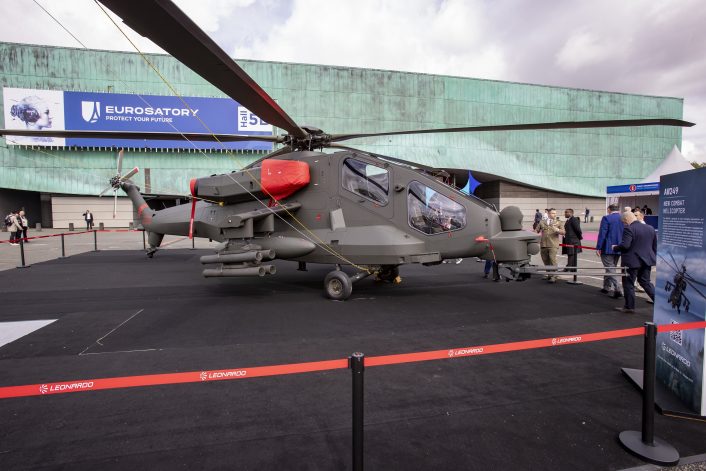
The AW249, designated AH-249A NEES (Nuovo Elicottero da Esplorazione e Scorta – New Exploration and Escort Helicopter) and nicknamed “Fenice” (Italian for “Phoenix”), is the only new Western combat helicopter designed from scratch in recent years.
The AW249 helicopter, whose first flight took place on August 12, 2022, incorporates advanced technologies that enhance digitization, connectivity, sensor fusion, information superiority, and interoperability. Such features make it a force multiplier in multi-domain operations, seamlessly integrating into air, land, sea, space, and cyber domains.
Design
While not designed as a stealth helicopter, the AW249 incorporates certain features to enhance its LO (Low Observability) characteristics, such as reducing radar cross-section and infrared signature. These enhancements aim to make it more challenging for adversaries to detect the aircraft.
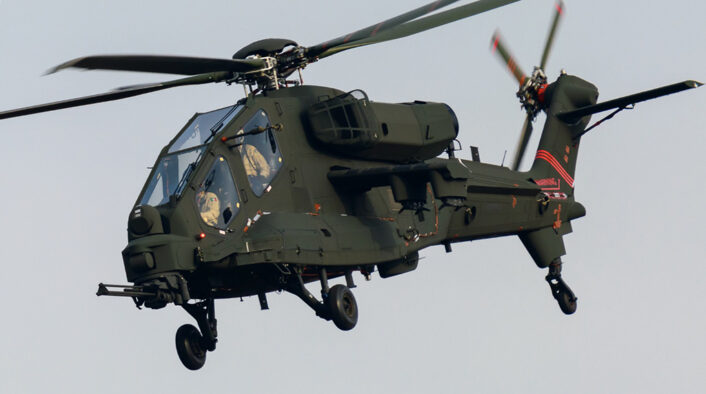
Many mistakenly believe the AW249 is an AH-64 Apache look-alike, but beyond their tandem cockpit setup, the similarities are minimal. The AW249 represents a distinct evolution from its predecessor, the AW129, which traces its roots back to the A129 developed in the late 1970s and first flown in 1983. While the AW249 builds upon lessons learned from the AW129 (originally Mangusta), it features a new airframe, transmission, engines, and avionics.
It’s worth noting that the tandem cockpit configuration, often associated with the Apache, actually finds its origins in the AH-1 Cobra, not the Apache itself.
Open Architecture
“To manage a rapidly evolving scenario, the AW249 features a complete open architecture with significant further growth and system/capability adaptation to respond to the demanding market requirements,” says Leonardo in a public release.
“In addition to high performance (speed, range, power margin and payload, Hot&High conditions, manoeuvrability for unmatched nap-of-the-earth flight), core to the AW249 is its ability to be fully integrated and interoperable in the modern multi-domain battlefield (air-land-sea-space-cyber). The AW249 features an advanced large area display human-machine-interface and touch screen/gesture recognition devices in the tandem-seating cockpit and a highly sophisticated Leonardo-developed Battle Management System. Displays and a modern pilot helmet enable the crew to rapidly access critical information on flight, navigation and the mission provided by multiple sensing and advanced connectivity.”
Indeed, situational awareness will be enhanced by systems for detecting obstacles and altimetric profiles, alongside standard navigational aids and advanced vision systems for day, night, and thermal conditions; helmet-mounted displays (HMD) will also be intergrated along with large area displays (LAD) in both cockpits.
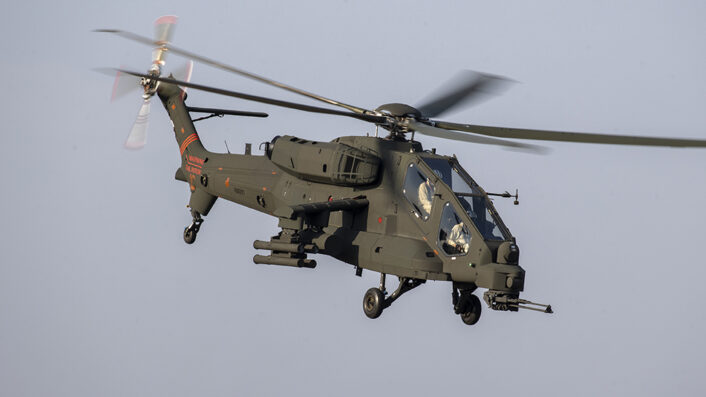
The AW249 is versatile, capable of executing missions such as aerial escort, close air support, close combat attack, and air interdiction. It can also function as an information-gathering element in a C4 (ISTAR) system. Utilizing its own surveillance systems or those of allied units, it scans and identifies ground units, disseminating data securely to the Command & Control Centre. This enhances its capability for advanced manned-unmanned teaming, optimizing its operational effectiveness.
“Powerful engines enable operations in the most extreme conditions with shipboard operational capability designed in from the start. The AW249 is equipped with a flexible weapon system that includes guided and unguided 70mm rockets, air-to-air infrared guided missiles, and air-to-ground radio frequency or fibre optic guided missiles in addition to a 20mm 3-barrell Gatling gun.”
Rumors turned out to be true, at #Eurosatory2024 Leonardo is showcasing the AW-249 Fenice for the first time. Still no word on what the chosen optic is called, however we do know they tested 4 in total. Hopefully Italy won’t be the only nation in Europe fielding the Fenice. pic.twitter.com/OWD8mw62eK
— A-129 Mangusta (@NichoConcu) June 17, 2024
“Outstanding survivability leverages on an advanced Integrated Defensive Aids Suite (IDAS), together with armoured seats and ballistic tolerant fuel tanks, crashworthiness and low detectability and in addition to the superior situational awareness delivered by its navigation and sensor-fusion ability. The AW249 is being developed also with digital simulation capabilities and a state-of-the-art technical support and training service approach in mind, benefitting from high fidelity mission simulation and virtual reality and prescriptive maintenance via data gathering and analysis, among others.”
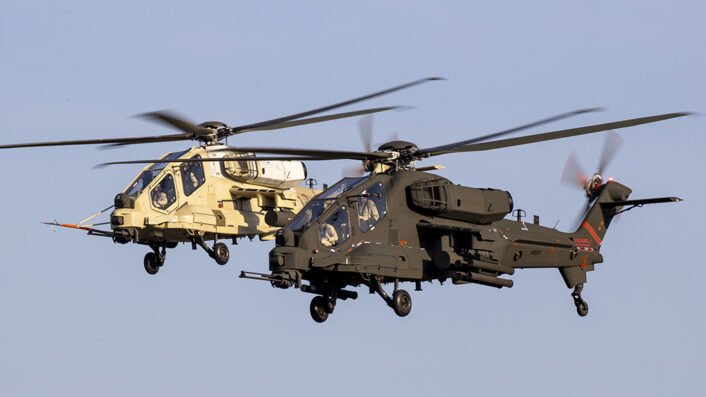
Since its maiden flight, four prototypes have been built, with two (CSX82097 and CSX82069) actively involved in performance, system integration, and payload testing. The remaining two prototypes are set to begin testing soon. The Italian Army is expected to receive its first deliveries by 2027.
Export opportunities
While the Italian Army is the launch customer of the type, Leonardo is now pitching the AW249 to the international market too with potential customers interested in the Western’s only next generation clean-sheet combat helicopter in Eastern Europe, the Middle East, and Latin America.
Some believe Germany might see the AW249 a possible replacement of its Eurocopter Tiger helicopters. Romania reportedly showed interest in acquiring a fleet of AW249 helicopters, as highlighted during the BSDA exhibition in Bucharest in 2022.
Additionally, Poland has also shown interest, with Leonardo signing a letter of intent with the Polish Armaments Group (PAG) in 2018 to collaborate on the AW249’s development. The Polish Ministry of Defense is currently considering options to replace its Mi-24 Hind helicopters, with recent announcements suggesting that the choices under consideration are the Boeing AH-64E Apache Guardian and the Bell AH-1Z Viper.
